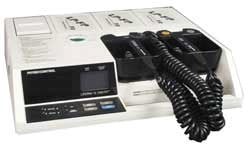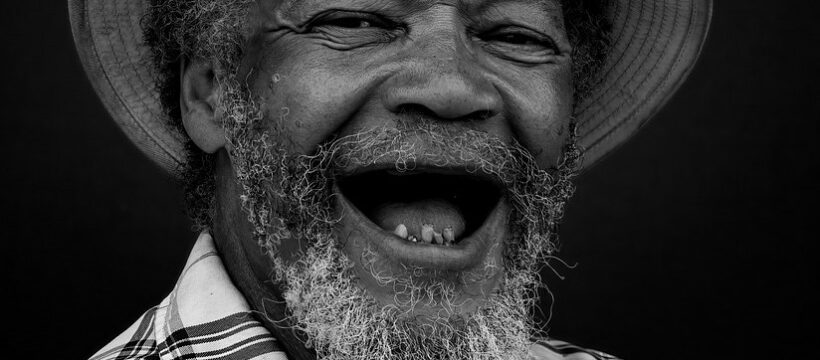“Jesus said to her, “I am the resurrection and the life. He who believes in me will live, even though he dies; and whoever lives and believes in me will never die. Do you believe this?”
Jn 11:25
Hang on!
When I worked in EMS, I would always try to arrive at the station about thirty minutes before shift change. It was a courtesy for the off-going crew. The 12-hour shift still lasted twelve hours if everyone did it, but somehow it seemed to provide a psychological boost for the off-going guys, making it less likely they would get a late call. After all, most medics worked a second job, and a late call was considered a real bummer.
It was always nice to have the opportunity to carry my things inside and get settled in before the actual shift change. It was a good rhythm that seemed to make for an easier shift, and usually, that’s what happened. But there was a night, I never made it inside . . .
An Early Call
I arrived at the station as usual, about 18:35. I had had a bad day, and the last thing I wanted was to do was run calls all night. I would need to be back at work the next morning at 9:00 AM to teach for another full day. I hoped to get some rest. Grab a bunk, check the truck for needed supplies, and then run out for some fast food before settling in for the night. But when I opened my car door in the ambulance bay at Station 3, I received a warbled siren blast. The noise hurt my ears. I glanced at the ambulance I would be working on that night—DC7—and could see my partner, Andy, sitting in the driver’s seat. I noticed that the engine was running. He leaned out of the driver’s window and shouted, “Come on! We’ve got a call!”
An early call? Seriously?
“Hang on,” I shouted, waving him off. “Let me grab my things.”
“No time,” he responded.
I ignored him and popped the trunk to get my EMS gear—stethoscope, Mag-Lite, gear bag with trauma shears, uniform jacket, hat . . .
Andy honked the horn again, and shouted, “Let’s go!”
I slammed the trunk and walked to the truck, gearless. I felt naked. I couldn’t run a call without at least my stethoscope and Mag-Lite. Could I?
“What’s the rush?” I said, climbing into the passenger’s seat, and closing the door.
“We’ve got a code.”
“Oh . . .” I buckled my seat belt and grabbed a pair of latex gloves. “Well, you could’ve at least let me grab my stuff.”
“You won’t need it.”
I knew he was probably right, but I never started a shift without my things. It had just become a habit.
A Burned Out Piece of Junk
A little frustrated and hungry, I buckled into my seat. The address we were given was close, so it would only be a four-minute ride. I used the time to think about where we were going: A code meant someone’s heart had stopped, and that almost always meant they were dead. All the hurrying in the world wouldn’t change that. It would just be another futile attempt. Why, I wondered, do we even do this? Still, I went through the checklist in my mind . . . CPR, airway management, defib (if indicated), and start an IV. Push whatever meds are needed (epi, amiodarone, maybe some bicarb or calcium chloride, dextrose, Narcan, etc., depending on the rhythm . . .
My mind raced. It always did before a code.
We were there before I knew it. Andy stopped the ambulance in front of an old house and grabbed the radio mic. He called us on-scene and then said, “Let’s do it.”
I climbed out of the truck and opened the gear compartment. I pulled out the medical box and airway kit and handed them to Andy, and then I grabbed the green oxygen cylinder and the cardiac monitor—a Physio-Control LP-10 cardiac monitor, beat up and ready for retirement.

“Seriously?” I said, surprised not to have one of the newer LP-15 units. “This old piece of junk?”
“It still works,” Andy said. “C’mon, let’s just get this over with.”
I shook my head and hefted the monitor over my shoulder. Then I followed Andy up the sidewalk to the front steps of the house. After climbing a short flight of stairs, we paused and glanced around. I couldn’t help but chuckle. The scene looked almost comical. Twelve old men sat together in a wide circle quietly rocking. Their aged faces reflected serenity.
Not a care in the world
I cleared my throat. No one spoke or greeted me. They hardly seemed to notice me.
“Excuse me,” I said, suddenly feeling confused, quite certain that my EMS uniform would have been enough to announce the purpose of my visit. “Did you guys call 9-1-1?”
“Oh, sure, sure,” one of the men responded. “We did.”
“Well—” I glanced at him and chuckled. “What can we do for you?”
“We all think Harold’s dead.”
“Harold? Which one’s Harold?”
“Over here,” one of them responded, drawing my attention to a bearded old guy in a flannel shirt. “Stopped breathing five minutes ago.”
“Really?” Slumped over peacefully in his rocker, I would’ve sworn the man was asleep. I set down my equipment and walked over. “Harold,” I called, touching his shoulder and gently shaking him. “Wake up.”
Harold Was Dead
Harold did not wake up. I looked into his eyes and saw no sign of life. His chest made no movement at all. I touched his neck to check for a pulse, but there wasn’t one.
“Uh, Andy?” I said, glancing at my partner. “I believe he’s right.”
Andy set down the LP-10 and pushed the power button. I grabbed the old man by the arms, slid him to the floor, and ripped open the front of his shirt. Buttons flew and fabric tore. Andy squirted some conduction gel on the defibrillator paddles and handed them to me. Without hesitating, I placed the paddles on Harold’s bony chest and glanced at the monitor. A squiggly line traced across the screen:

“He’s in V-fib,” I said. “We can handle that.”
I pushed a button on the side of one of the paddles and the unit began to whine. The whine built quickly and leveled off into a high-pitched shrill. “Okay,” I said, the capacitor fully charged. “Go ahead and clear.”
Andy backed away. I straightened my arms and pushed down hard. Then with my thumbs, I depressed the shock buttons simultaneously and two hundred watt-seconds of electricity discharged into the guy’s body. His back arched and his muscles jerked. And then suddenly, to my amazement, his eyes opened wide.
I jumped back as if seeing a ghost. Then a huge grin spread across my face. I had just witnessed a miracle.
Can you believe it?
Harold looked about briefly as if trying to gain his bearings, and then turned and gazed up at me.
“Who are you?” he exclaimed.
“Me?” I laughed out loud. “My name is Pat. I’m a paramedic. Who are you?”
“I’m Harold—” As if awakening from a short nap, Harold sat up and glanced around the front porch at his friends. “Hey guys,” he exclaimed. “What happened?”
“You were dead,” one of the old guys said, somewhat matter-of-factly. “These boys saved your life.”
“They did?” Harold rubbed his chin and nodded at each of us. “Thank you,” he said, with a toothless grin. “Looks like you fellas gave me a second chance.”
God wasn’t finished
That’s a true story; just one of the many incredible things I witnessed while working as a street paramedic in Durham, NC. Harold died that evening—his heart stopped beating and he was clinically dead. But only for a few minutes. God wasn’t finished with him, so He sent us. And with the delivery of a single shock of electricity, Harold’s heart got back into sync. I had no stethoscope, no Mag-Lite, none of the invaluable EMS tools that I thought I couldn’t do without, just my hands and a burned-out piece of junk LP-10 defibrillator. Oh, and God. He was there for sure. He’s in the business of miracles, and He certainly performed one that night.
You know, God performed another miracle when He raised His son, Jesus Christ, from the dead. He did it so that you and I could live forever, so that, like Harold, we too could have a second chance.
Believe it!

Image of Harold by Leroy Skalstad from Pixabay
Image of crosses by Gerd Altmann from Pixabay
Also by Pat Patterson: Answering the Call A Devotional Book for First Responders




What a privilege to share in God’s miracles.
Yes indeed, Diana. I was privileged to see many works of God over the years in the back of that ambulance.
Thanks for sharing here and in the miraculous works of God over the years. Beyond words, I’m thankful to have witnessed many miracles throughout my life too. GOD is so good!